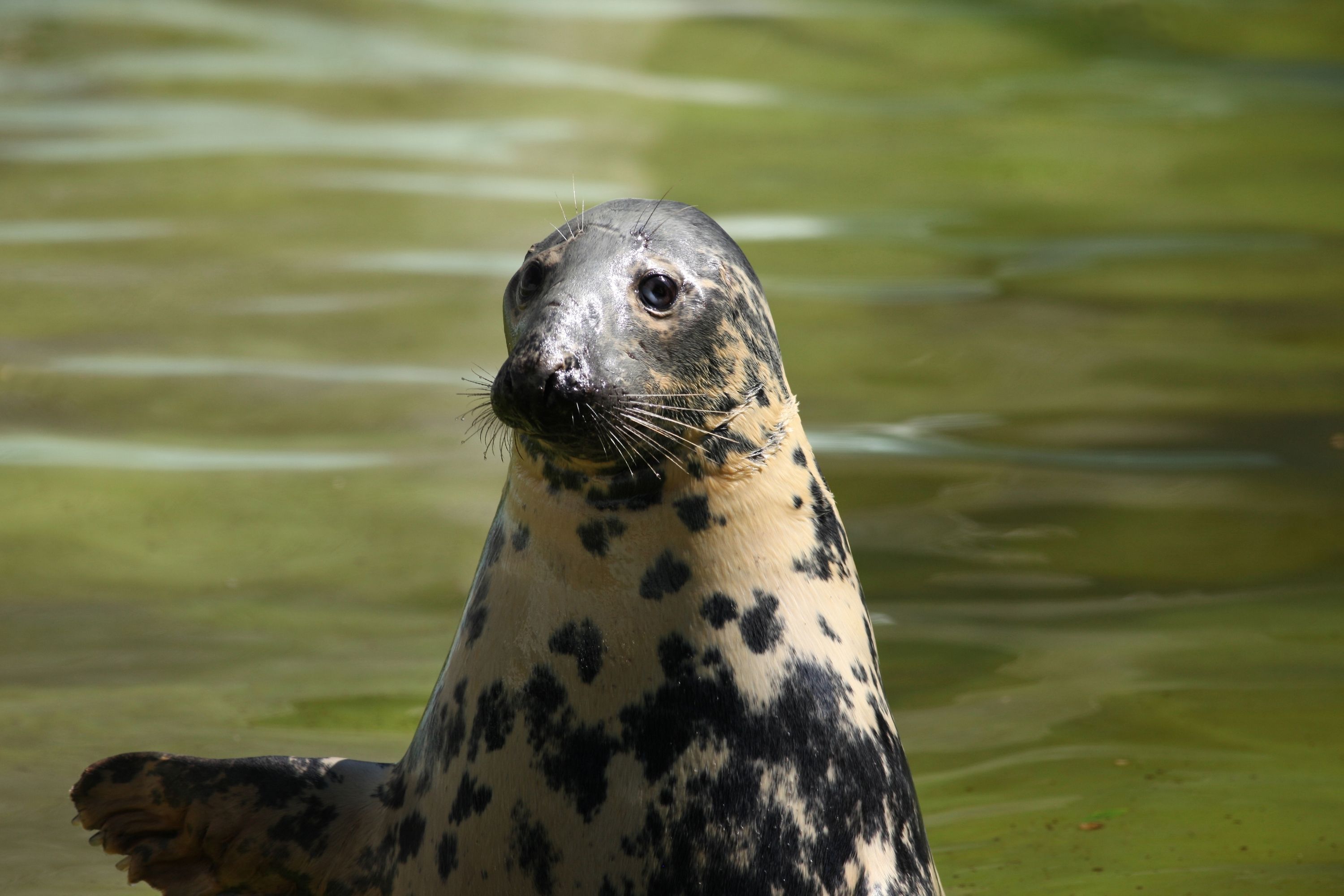Grey seal
(Halichoerus grypus)

Description
The grey seal (Halichoerus grypus) is found on both shores of the North Atlantic Ocean. In Latin Halichoerus grypus means "hook-nosed sea pig". It is a large seal of the family Phocidae, which are commonly referred to as "true seals" or "earless seals". It is the only species classified in the genus Halichoerus. Its name is spelled gray seal in the US; it is also known as Atlantic seal and the horsehead seal. This is a fairly large seal, with bulls in the eastern Atlantic populations reaching 1.95–2.3 m (6 ft 5 in – 7 ft 7 in) long and weighing 170–310 kg (370–680 lb); the cows are much smaller, typically 1.6–1.95 m (5 ft 3 in – 6 ft 5 in) long and 100–190 kg (220–420 lb) in weight. Individuals from the western Atlantic are often much larger, with males averaging up to 2.7 m (8 ft 10 in) and reaching a weight of as much as 400 kg (880 lb) and females averaging up to 2.05 m (6 ft 9 in) and sometimes weighing up to 250 kg (550 lb). Record-sized bull grey seals can reach about 3.3 m (10 ft 10 in) in length. A common average weight in Great Britain was found to be about 233 kg (514 lb) for males and 154.6 kg (341 lb) for females whereas in Nova Scotia, Canada adult males averaged 294.6 kg (649 lb) and adult females averaged 224.5 kg (495 lb). It is distinguished from the smaller harbor seal by its straight head profile, nostrils set well apart, and fewer spots on its body. Wintering hooded seals can be confused with grey seals as they are about the same size and somewhat share a large-nosed look but the hooded has a paler base colour and usually evidences a stronger spotting. Grey seals lack external ear flaps and characteristically have large snouts. Bull greys have larger noses and a less curved profile than harbor seal bulls. Males are generally darker than females, with lighter patches and often scarring around the neck. Females are silver grey to brown with dark patches. In the United Kingdom and Ireland, the grey seal breeds in several colonies on and around the coasts. Notably large colonies are at Blakeney Point in Norfolk, Donna Nook in Lincolnshire, the Farne Islands off the Northumberland Coast (about 6,000 animals), Orkney and North Rona. off the north coast of Scotland, Lambay Island off the coast of Dublin and Ramsey Island off the coast of Pembrokeshire. In the German Bight, colonies exist off the islands Sylt and Amrum and on Heligoland.
Taxonomic tree:







